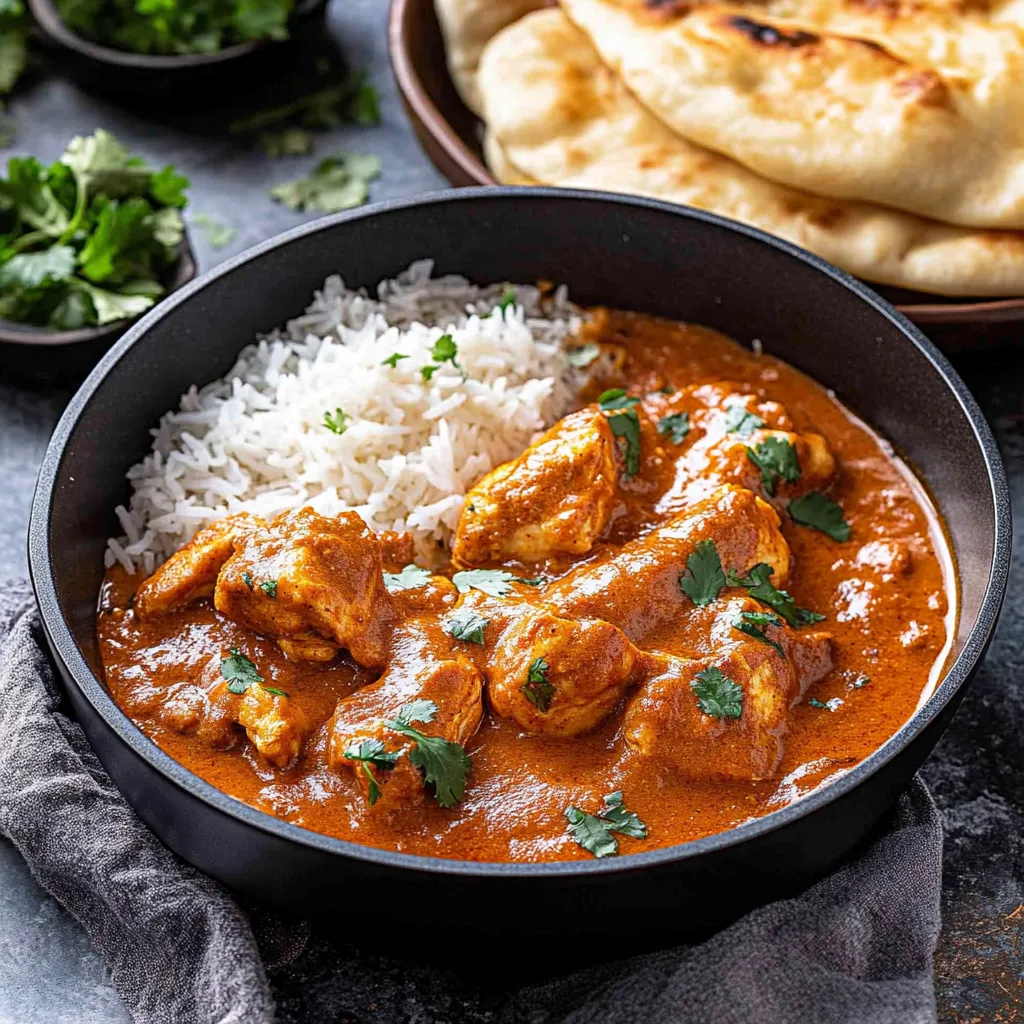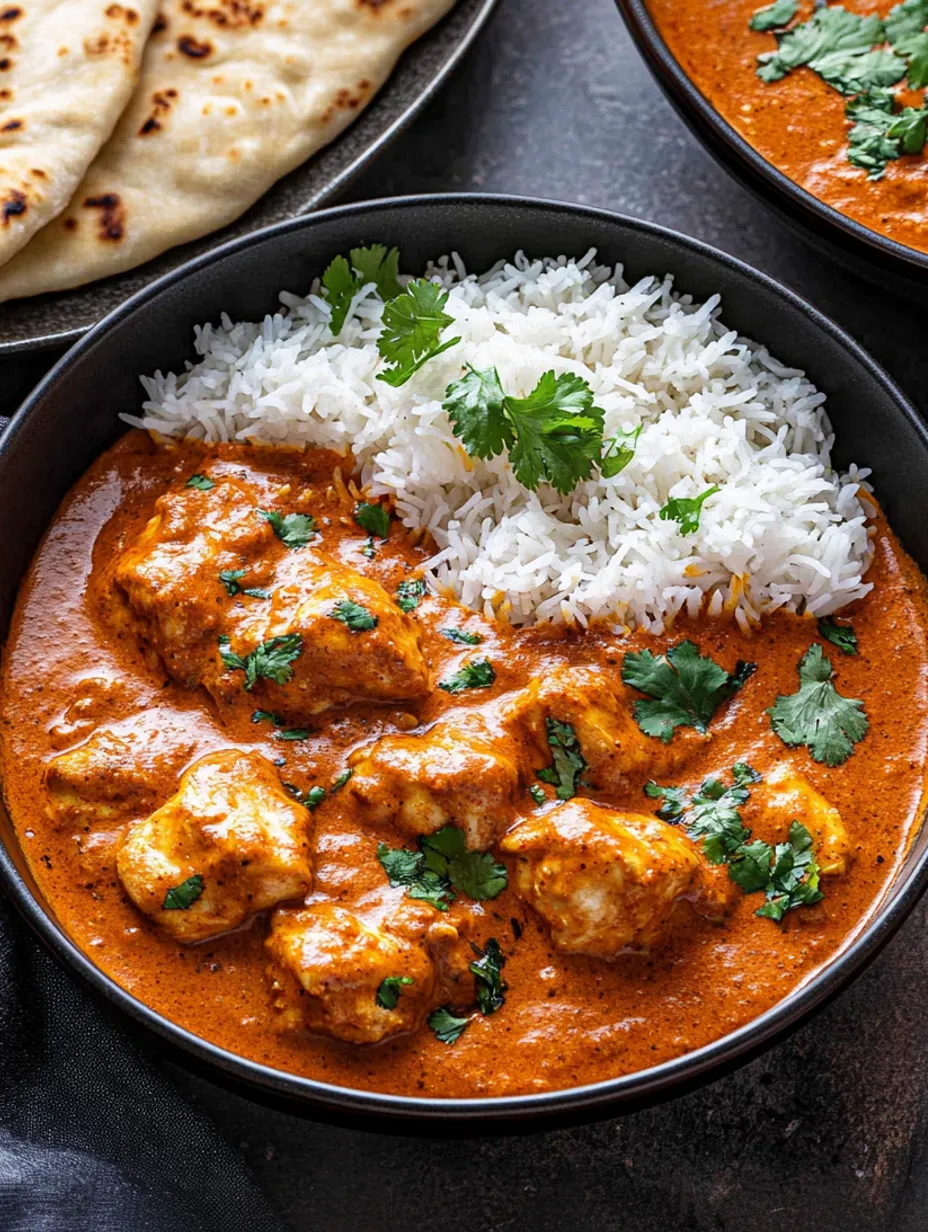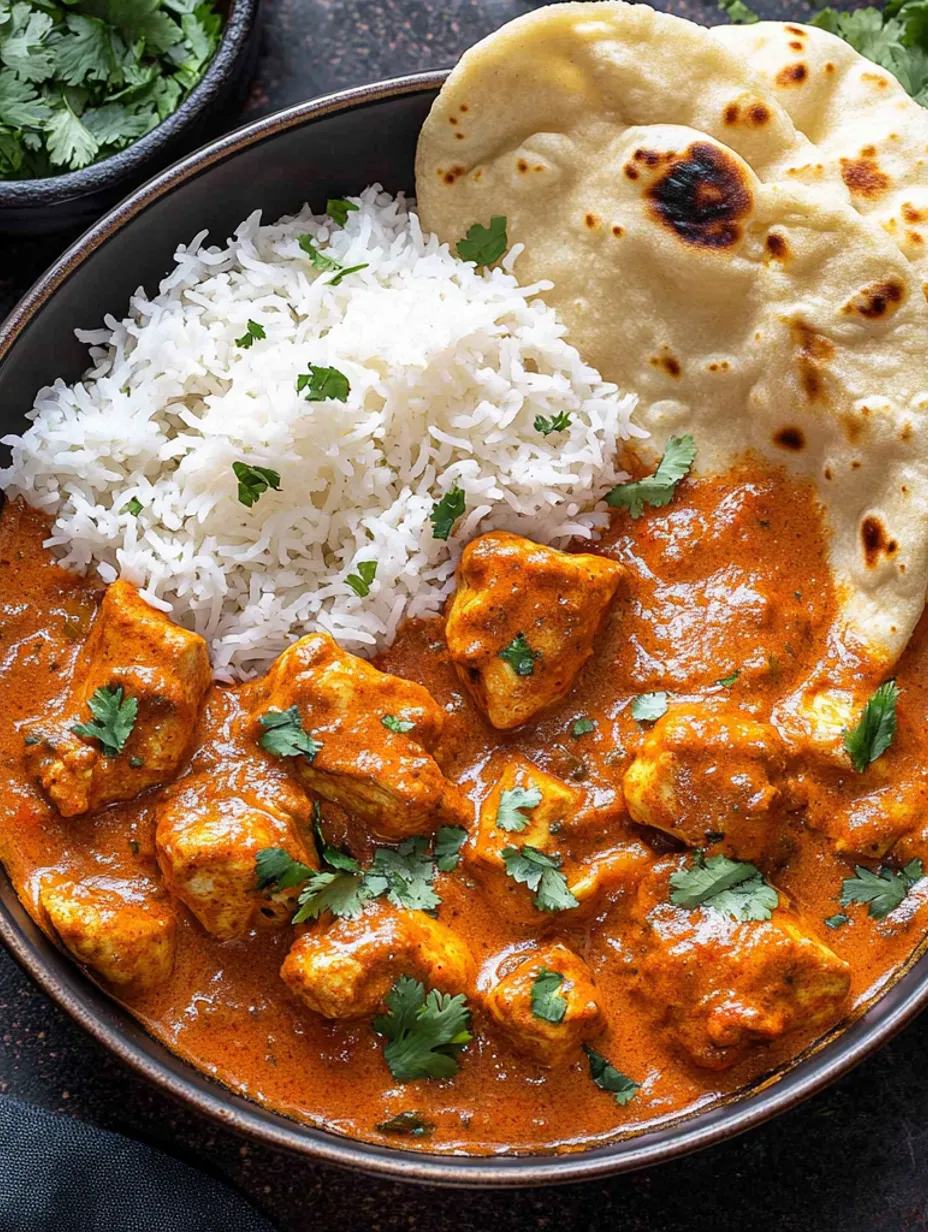 Pin it
Pin it
I've been making chicken tikka masala for years, and this one-pot version has become my go-to whenever those Indian takeout cravings hit but I don't feel like spending $50 on delivery. This simplified recipe gives you all those rich, complex flavors without requiring a tandoor oven or 20 different spices you'll use once and then forget about for three years.
I discovered this approach after getting frustrated with traditional recipes that required marinating overnight, grilling, and then making a separate sauce—who has time for that on a Tuesday? This version streamlines the process while keeping all the flavor that makes tikka masala so crave-worthy.
What You'll Need
- Boneless chicken thighs are your best bet for juicy, tender meat that won't dry out
- Plain yogurt works magic tenderizing the chicken in even a quick marinade
- Garam masala provides that complex spice blend that's the backbone of the dish
- Kashmiri chili (or paprika in a pinch) gives that signature vibrant color
- Tomato puree creates the base for that silky, tangy sauce
- Heavy cream adds that irresistible richness that makes you want to lick the plate
 Pin it
Pin it
How I Make It
Quick Marinade MagicFirst, I mix chicken pieces with yogurt and a blend of spices—garam masala, turmeric, cumin, chili, garlic, and ginger. Even just 10-15 minutes of marinating makes a noticeable difference in flavor and tenderness, though I'll often prep this before work for an extra-flavorful dinner. The yogurt is the secret weapon here—it tenderizes the chicken and helps the spices cling to the meat.
One-Pan SearInstead of firing up a grill, I sear the marinated chicken in a hot skillet until it gets those lovely browned edges. Working in batches is key here—overcrowding the pan means steaming instead of searing, and we want that slight char that mimics tandoor cooking. I set the chicken aside while it's still slightly underdone since it'll finish cooking in the sauce later.
Flavor-Building SauceUsing the same pan (hello, fewer dishes!), I sauté onions in butter until they're soft and turning golden. Then comes another hit of garlic and ginger along with more warm spices, which bloom in the hot butter and release their aromatic oils. The tomato puree goes in next, simmering until it deepens in color and concentrates in flavor. This sauce base is where all the magic happens.
Bringing It All TogetherThe finishing touch is stirring in heavy cream, which transforms the intensely flavored sauce into something rich and velvety. The partially cooked chicken goes back in, along with any juices that have collected on the plate—that's pure flavor you don't want to waste! A gentle simmer lets the chicken finish cooking while soaking up all that sauce goodness.
The first time I made this for my partner, who's notoriously picky about Indian food after living in London for years, I was nervous. He took one bite, got very quiet, then looked up and said, "This is better than the takeout we spent $30 on last week." That's when I knew this recipe was a keeper.
Serving Ideas
This tikka masala begs to be served with fluffy basmati rice to soak up all that sauce. If you're feeling ambitious, homemade naan is the perfect sidekick—nothing beats tearing off pieces of warm bread to scoop up the last bits of sauce. For a lighter option, serve it with cauliflower rice or a simple side salad with cucumber and red onion.
Mix It Up
If you want to switch things up, try this same technique with paneer instead of chicken for a vegetarian version. Adding a handful of frozen peas or spinach in the last few minutes of cooking brings color and nutrients. For extra richness, a tablespoon of tomato paste along with the puree deepens the flavor even more.
Storage Secrets
Like most curries, this actually tastes even better the next day after the flavors have had time to meld. Store leftovers in an airtight container in the fridge for up to three days. Just rewarm gently on the stove with a splash of water to loosen the sauce. It also freezes beautifully for up to three months—perfect for meal prep or emergency comfort food.
 Pin it
Pin it
Little Tricks I've Learned
- Chicken thighs are more forgiving than breasts if you accidentally overcook them
- For an extra layer of flavor, add a cinnamon stick to the sauce as it simmers
- A dollop of yogurt on top when serving adds a cool contrast to the warm spices
This dish has become something of a signature in my home—the meal I make when I want to impress guests without stressing myself out. There's something deeply satisfying about creating such complex flavors in a relatively simple way, and watching people go back for seconds (and sometimes thirds) is the best compliment a home cook can get.
Frequently Asked Questions
- → What cut of chicken works best for tikka masala?
- Boneless, skinless chicken thighs are ideal as they stay tender and juicy during cooking. You can substitute with chicken breast if preferred, but be careful not to overcook it as breast meat can dry out more easily.
- → Can I make this dish less spicy?
- Yes, simply reduce or omit the red chili powder. The Kashmiri chili powder adds more color than heat, so you can keep that in. You can also add a bit more cream or sugar to balance any heat.
- → What's the difference between garam masala and curry powder?
- Garam masala is a warming spice blend without turmeric, while curry powder is a British invention that contains turmeric as its base. For authentic flavor, use garam masala as called for in the recipe rather than substituting curry powder.
- → Can I make tikka masala ahead of time?
- Absolutely! In fact, the flavors develop even more when made a day ahead. Store in an airtight container in the refrigerator for up to 3 days or freeze for up to 3 months. Reheat gently to prevent the cream from separating.
- → What can I substitute for heavy cream?
- Evaporated milk works well as a lower-calorie option. Coconut cream or full-fat coconut milk can be used for a dairy-free version, though it will add a slight coconut flavor. Greek yogurt mixed with a little milk is another option.
- → What side dishes pair well with chicken tikka masala?
- Traditional accompaniments include basmati rice, naan bread, or roti. For a complete Indian meal, add sides like raita (yogurt cucumber dip), chutney, or a simple salad of sliced cucumber, tomato, and onion with lemon juice and salt.
